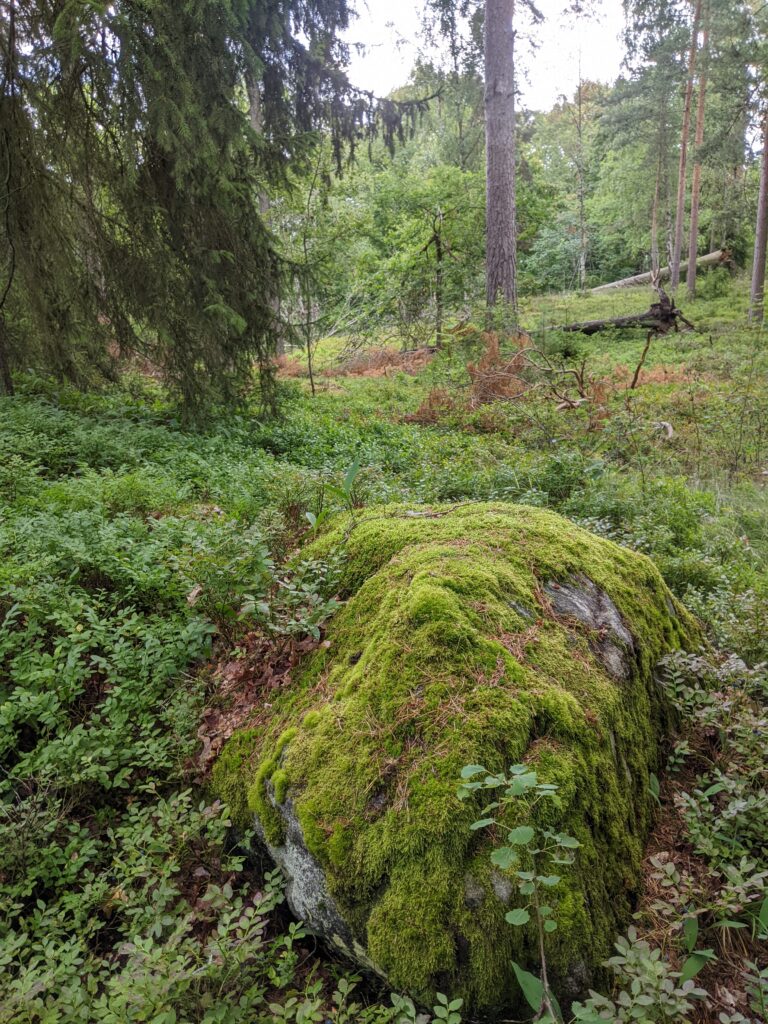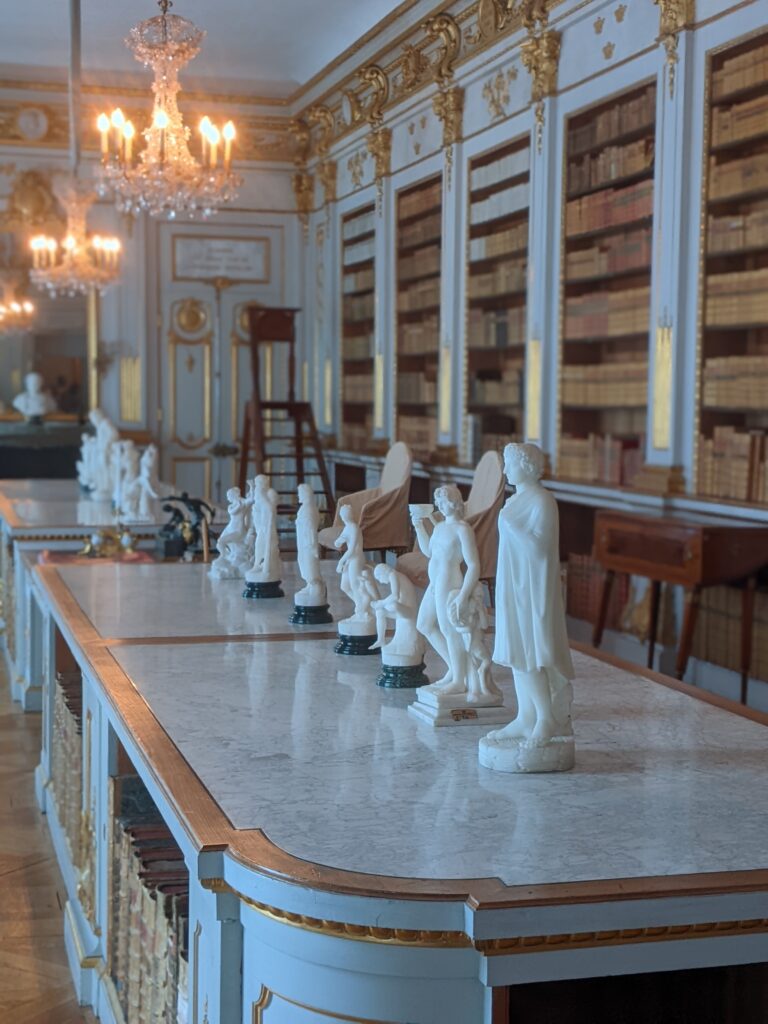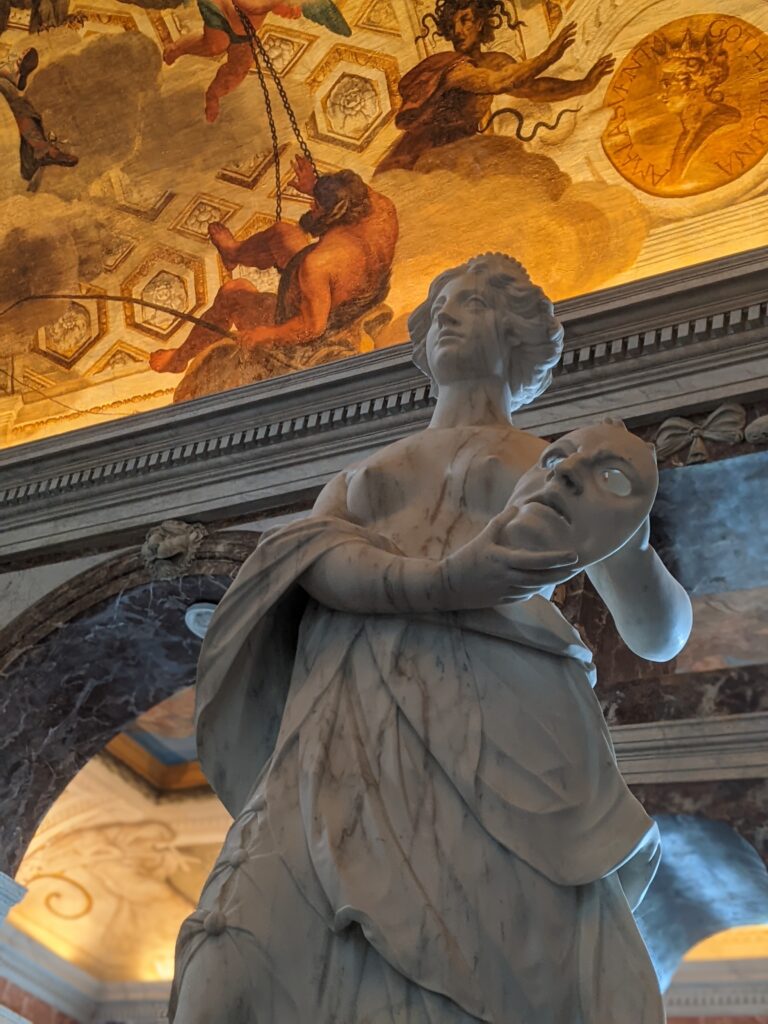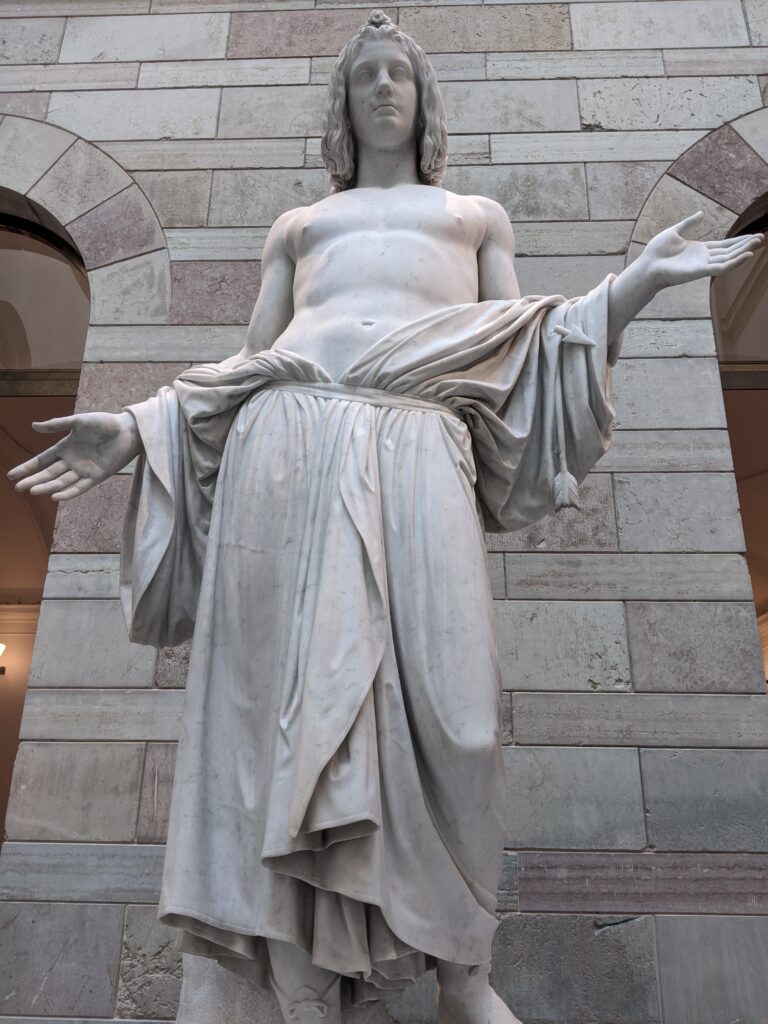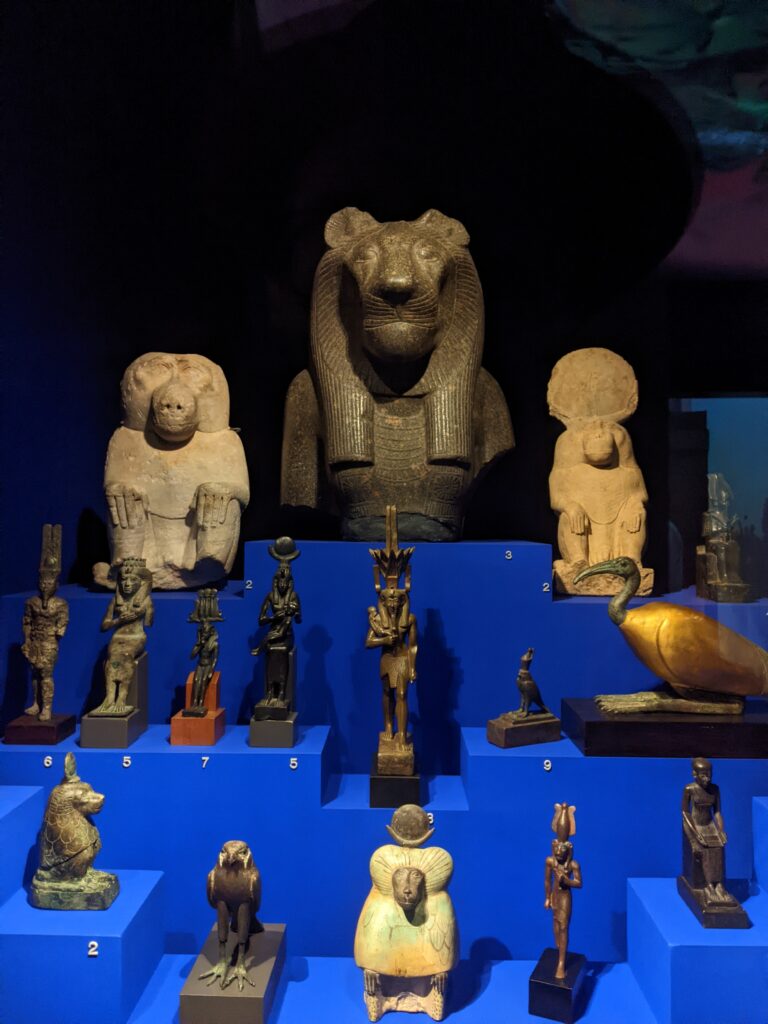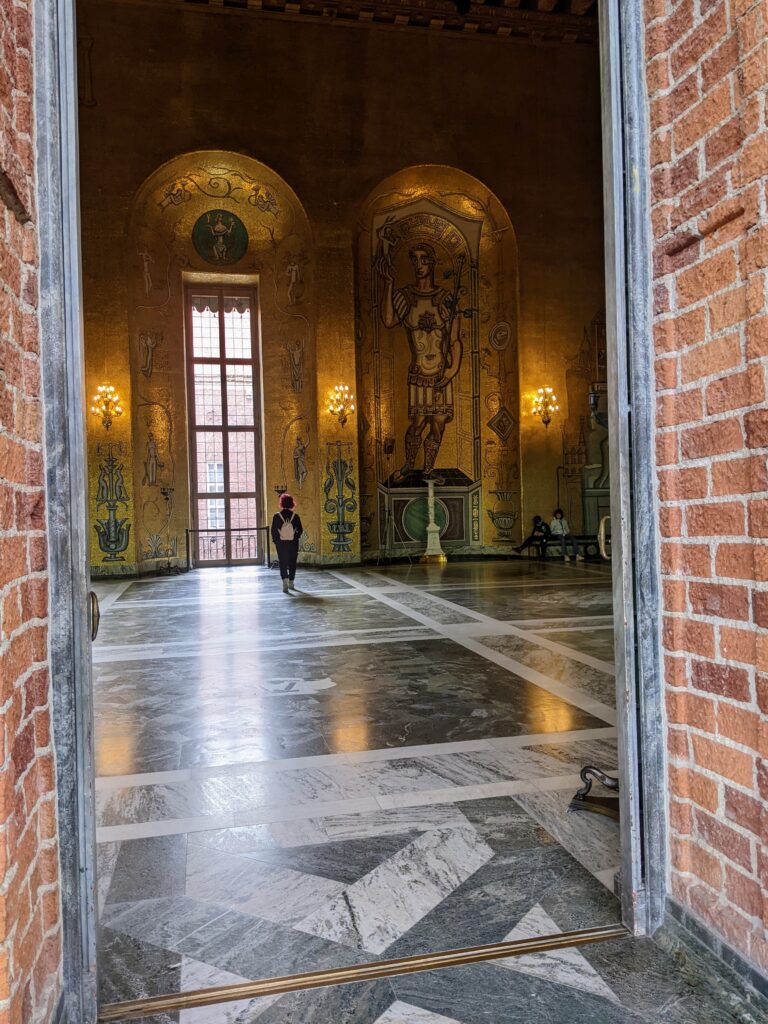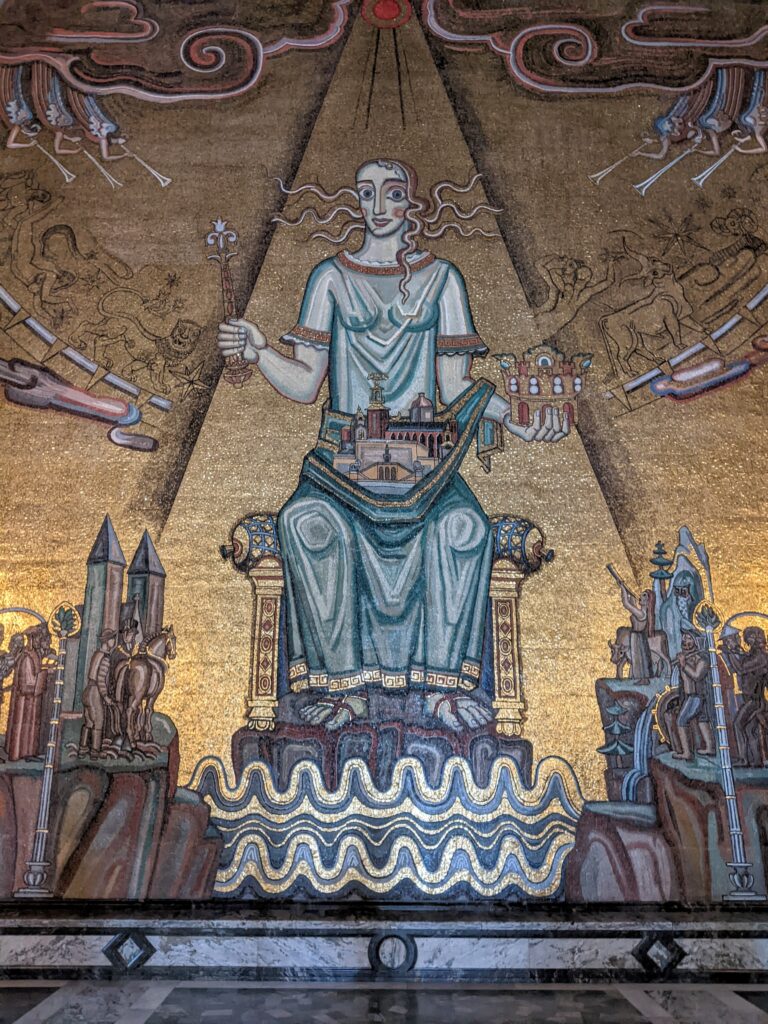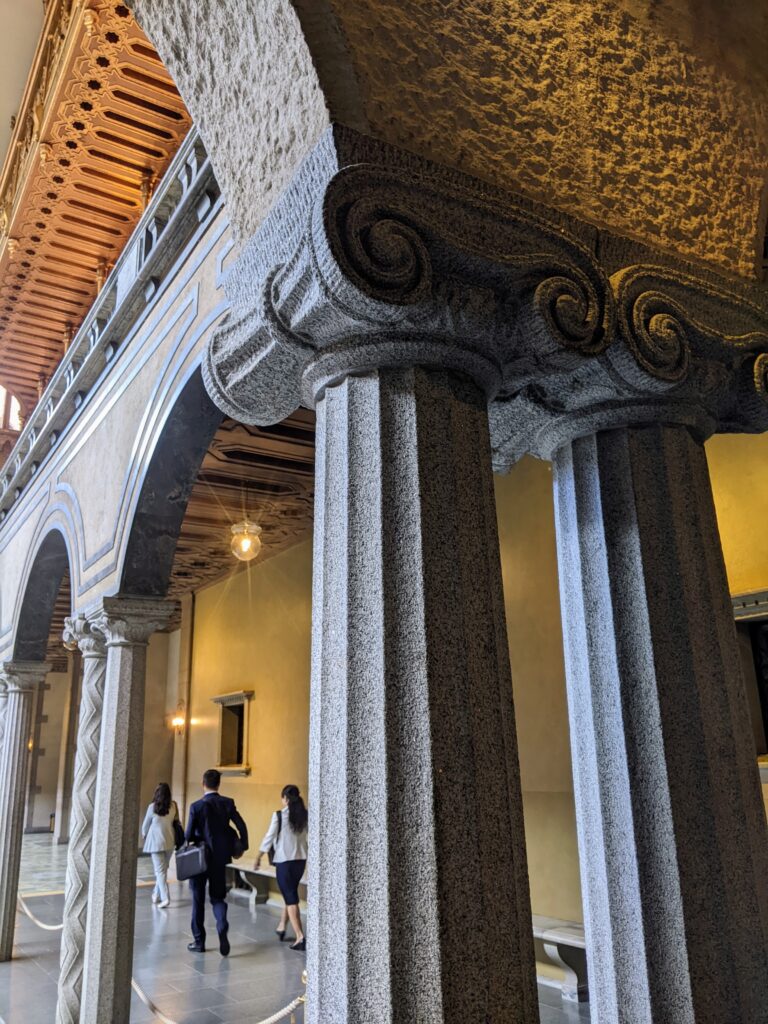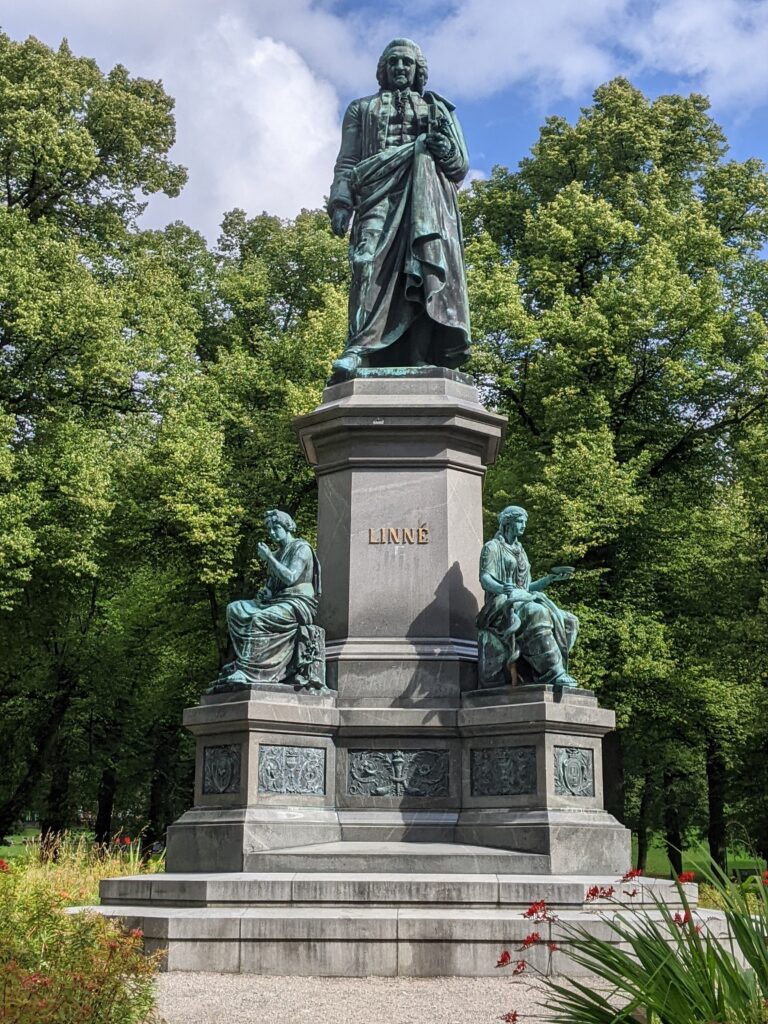In the last week or so in Stockholm I’ve explored Drottingholm Palace, a royal residence west of the city. In walking around the island I found a section of wild forest near the palace and remembered the splendours of wild ecosystems in the Scandinavian northern forests – mossy green boulders, beds of pine needles, birch and oak and cool air, and silence. It felt like some kind of spiritual and emotional renewal just to have that little time by myself in that forest. The palace, like most palaces, felt bombastic and lacked charm. As if it wanted to be Versailles, and was trying hard. But still a place that one does feel enlarged and at least a bit elevated compared to the muddle of modern architecture – the formal gardens with their huge fountain and water side location to the main building are at least worth seeing.
Also visited the National Museum – the sculpture courtyard was remarkable. A well of limpid light falling from a glass ceiling high above onto the arrayed marbles below, life size and larger than life size, created a beautiful and entrancing experience. A huge sculpture of a shirtless, long haired Adonis with, casual, nonchalant and powerful frame, arms and hands open to the world, communicated something accepting and positive.
Another day I went to a tour of the City Hall – loved the carved granite in the banqueting hall for the Nobel prize ceremony – and the glittering gold mosaics in the golden hall. The mosaic representation of Stockholm shows her personification as a maiden in the centre of the world, with all the West to the left (Eiffel tower, NYC, etc), and the Orient to the right (minuets of Instanbul, camel of the Arabs, etc). Every city in the world lives under the illusion that its at the centre doesn’t it?
Then I went and walked around the Medelhavsmuseet, which houses Sweden’s most important archaeological collections of ancient and historical relics from the Mediterranean countries. The place is in a gorgeous bank from 1905, full of marble and light. If you ever want a cafe in Stockhom please think Bagdad Café – it is the best café I have been to, with views over Strömmen (the stream), the Royal Palace and the Opera, and the chance to sip coffee among real Greek and Roman antiquities.
Yesterday I went to see the main library in Stockholm – an old building but the reading room felt poorly ventilated and uninspiring. But outside in the adjoining park a tall bronze statue of Carl Linneaus stood. I looked up at his figure, and thought about John Fowles’s reflection in his book The Tree that so much our modern way of seeing nature comes from this old man’s reductive, analytic gaze, parsing complexity to the binomal species name, growing, budding complexity strangely hidden and ‘owned’ by attaching a two part Latin name to it. And yet by caring and being attentive enough to parse the green tangle of a forest into species identifications one is at least looking. One is at least paying attention. The scientific gaze has its drawbacks, a loss of holistic and affective understanding, and a loss of mystery, but at least it is a better fate than the total oblivion of human neglect.
